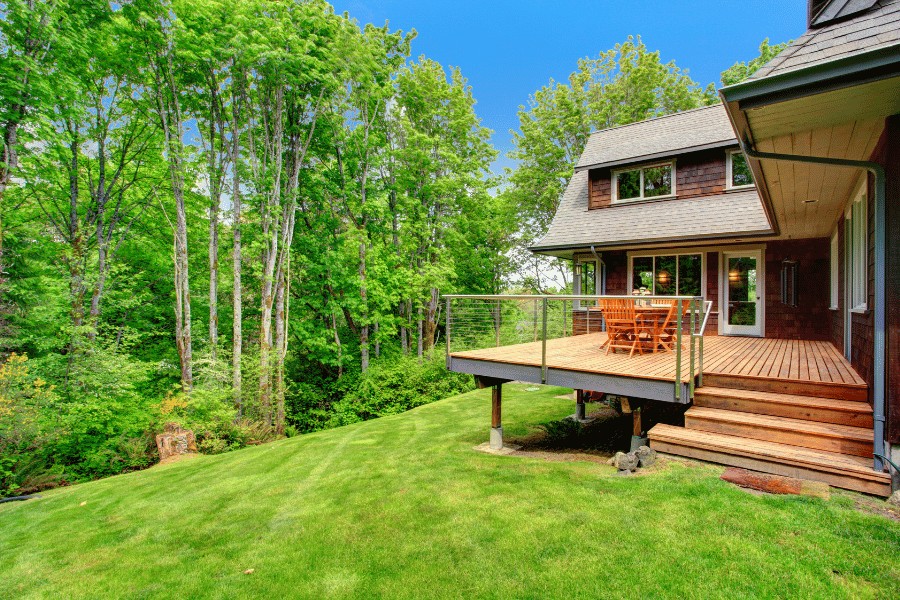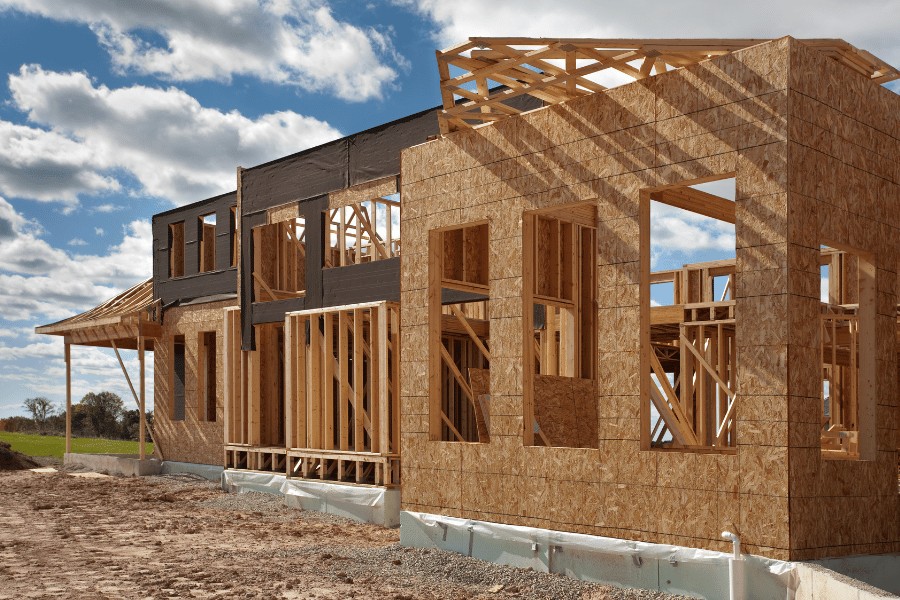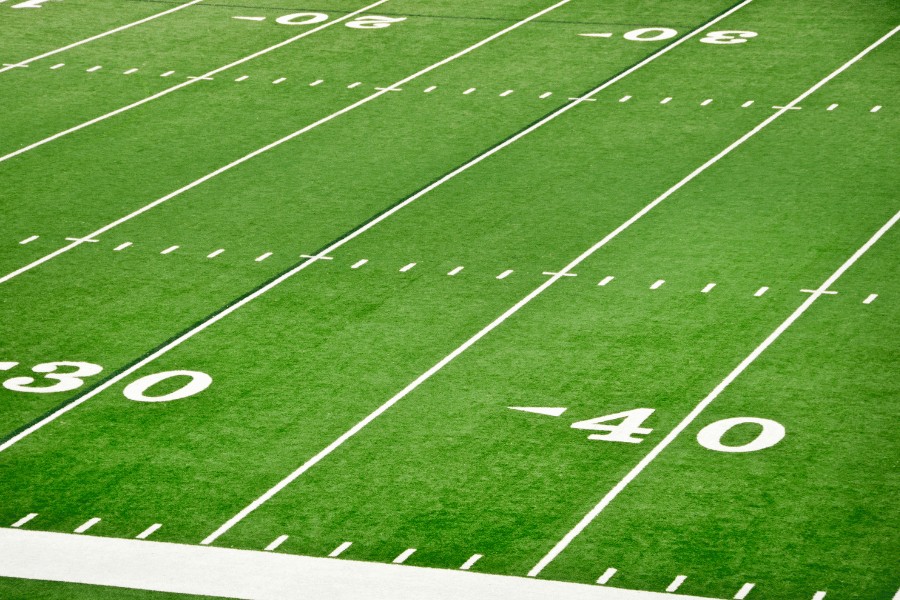Understanding land measurements is crucial, especially when dealing with real estate. Let’s delve into the specifics of an acre and explore practical ways to estimate land size.
Buying property, whether it’s your dream home or an investment, involves navigating various terms and measurements. Among these, “acre” frequently appears when describing land size. Often discussed separately from the square footage of a house itself, understanding what an acre truly represents can be initially confusing. How much space does an acre actually encompass? What does owning an acre entail in terms of upkeep? And how can you even picture such a measurement? This guide will demystify the concept of an acre, providing you with a clear understanding of land measurement and acreage.
Decoding the Acre: Size and Dimensions
Just how many feet make up an acre? An acre, a standard unit for land measurement in the United States, is precisely 43,560 square feet. While numbers provide accuracy, visualizing an acre can be more intuitive. Imagine an area roughly equivalent to 90% of a football field, or perhaps 16 tennis courts laid out together, or even nine basketball courts. Importantly, an acre isn’t confined to a specific shape; it can be rectangular, circular, or even irregular. A common representation of an acre in a rectangular form is one furlong by one chain, translating to 660 feet in length and 66 feet in width.
Historically, as Encyclopedia Britannica notes, the acre’s size was rooted in agricultural practice. It represented the amount of land a yoke of oxen could plow in a single day using a wooden plow. The term “acre” itself is believed to originate from the Latin word “ager,” meaning “field.”
However, relying on oxen-plowing as a standard for an acre today would be unreliable, varying greatly based on oxen strength and plowing efficiency. By the 13th century, a more standardized approach emerged. Edward I of England defined the acre as a rectangle four rods wide and 40 rods long. A rod, another unit of measurement, is 16.5 feet.
(4 rods x 16.5 feet) x (40 rods x 16.5 feet) = 66 feet x 660 feet = 43,560 square feet
This standardized measurement persists in numerous countries, including the United States. The Weights and Measures Acts in England solidified the acre’s length, and English settlers brought this unit of measurement to America, establishing its continued use.
| Unit Conversion | Measurement |
|---|---|
| Acre in square feet | 43,560 square feet |
| Acre in square yards | 4,840 square yards |
| Acre in square meters | 4,056.86 square meters |
| Acre in square hectares | 0.405 square hectares |
| Acre in square miles | 0.00156 square miles |
| Acre in square kilometers | 0.00404 square kilometers |





Practical Methods to Measure Your Lot Size
When you’re in the process of buying a home or land, accurately understanding the lot size is essential. While property listings often provide this information, and official documents should contain precise measurements, there might be situations where you need to estimate or verify the land size yourself. Here are several methods, ranging from simple to professional:
1. Manual Measurement with Tools
For a hands-on approach, manually measuring your lot is feasible, although it can be more time-consuming. Using a measuring tape or a measuring wheel, walk the perimeter of your property line. A measuring wheel is particularly useful for longer distances; simply roll it along the boundaries, and it records the distance. For more precise tracking during manual measurement, consider using Google Maps on your smartphone. As you walk the property lines, Google Maps can record your path, providing dimensions you can then use to calculate the area.
Let’s illustrate with an example: Imagine a rectangular plot of land measuring 500 feet in length and 650 feet in width.
Length = 500 feet
Width = 650 feet
To find the area in square feet, multiply the length and width:
Area = Length x Width
= 500 feet x 650 feet
= 325,000 square feet
To convert this to acres, divide the square footage by 43,560 (the number of square feet in an acre):
Acres = 325,000 square feet / 43,560 square feet/acre
≈ 7.46 acres
2. Consulting Your Property Deed
The property deed, or other official documents associated with your house or land, often contains detailed information about the property, including its dimensions. These documents might even include diagrams or plats of the land, which can be very helpful in visualizing the shape and size. Look for sections describing the property’s boundaries and measurements. Once you have the length and width measurements from the deed, you can use a calculator or the formula above to determine the lot size in acres.
3. Examining the Property Plat Map
If you’ve recently purchased or inherited property, you likely received a plat map during the closing process. A plat map is a detailed drawing that shows the subdivision of land into lots and blocks. It provides a visual representation of your property in relation to surrounding properties and streets. Critically, it includes boundary dimensions and often the calculated acreage of each lot, along with the tax parcel identification number, which is useful for official records and inquiries.
4. Professional Land Survey
Engaging a professional surveyor is the most accurate method for determining your lot size. Surveyors use specialized equipment and techniques to precisely measure and map land boundaries. This is especially valuable for irregular shaped lots or when accuracy is paramount, for instance, in boundary disputes or for development purposes. While it’s generally the most expensive option, a professional survey provides a legally recognized and highly accurate description of your property’s dimensions and acreage.
5. Estimation by Pacing
Pacing is a rudimentary estimation technique, and is the least accurate of these methods. It involves walking the length and width of your lot and counting your steps. You then estimate the distance of each pace (your average step length). While this provides a very rough estimate, step length varies, and terrain irregularities can impact accuracy significantly. Pacing is best used only for a very quick, ballpark figure when more precise tools or documents aren’t immediately available.
Key Documents for Lot Size Information
- Property Deed: Legal document transferring property ownership, containing property descriptions.
- Property Plat Map: Detailed map showing property boundaries and dimensions within a subdivision.
- Subdivision Plat Map: Similar to property plat map, but for the entire subdivision.
- Boundary Survey Plan: Surveyors’ official plan detailing property lines and measurements.
- Existing Conditions Plan: Architectural or engineering plan showing current site features and dimensions.
- Tax Map: Maps used by local governments for property tax assessment, often showing parcel lines.
- Local GIS (Geographic Information System): Digital mapping system accessible through local government, providing property information.
- Professional Survey Services: Hiring licensed surveyors for precise measurements.
- Measuring Wheel: Tool for rolling and measuring distances along property lines.
- Pacing: Estimating distance by counting steps (least accurate).
Converting Square Feet to Acres: A Simple Calculation
The conversion between square feet and acres is straightforward. Since there are 43,560 square feet in one acre, you use this number as your conversion factor.
To convert acres to square feet, multiply the number of acres by 43,560.
- 1 acre = 43,560 square feet
- 2 acres = 2 x 43,560 = 87,120 square feet
- 3 acres = 3 x 43,560 = 130,680 square feet
- 4 acres = 4 x 43,560 = 174,240 square feet
- 5 acres = 5 x 43,560 = 217,800 square feet
To convert square feet to acres, divide the total square footage by 43,560.
For instance, if you have a piece of land that is 550,000 square feet:
Acres = 550,000 square feet / 43,560 square feet/acre ≈ 12.6 acres
Understanding the Cost of an Acre of Land
A common question following “how big is an acre?” is “how much does an acre cost?”. According to the USDA, the average cost of an acre of land in the United States in 2022 was approximately $3,800. However, land prices are incredibly variable and highly dependent on location. Land in densely populated states or desirable metropolitan areas will command significantly higher prices.
Residential land within or near developed areas often comes in parcels of an acre or less, reflecting higher demand and development potential. Undeveloped land, particularly in more rural areas, will generally be less expensive than land already situated with access to infrastructure like roads and utilities. As an example, the average price per acre in North Carolina was around $4,600 in 2022, illustrating regional price differences.
States with the Highest Acre Prices (generally):
- New Jersey
- Rhode Island
- Connecticut
- Massachusetts
- Maryland
- Delaware
- New York
- California
- Pennsylvania
States with the Lowest Acre Prices (generally):
- New Mexico
- Montana: average around $2,283 per acre
- Wyoming: average around $1,558 per acre
- North Dakota: average around $2,936 per acre
- Nebraska: average around $2,936 per acre
- Kansas: average around $4,220 per acre
- Nevada: average around $2,116 per acre
- Arizona: average around $4,328 per acre
- Idaho: average around $3,435 per acre
Factors Influencing Land Cost Per Acre
Numerous factors contribute to fluctuations in land prices per acre. These can broadly be categorized as:
-
Location: This is paramount. Land in highly sought-after areas, urban centers, or coastal regions will be far more expensive than land in remote or less developed regions. Proximity to amenities, employment centers, and desirability of the region all play a role. Land near flood zones or areas with other environmental hazards will also typically be priced lower.
-
Use and Zoning: How the land can be used (residential, commercial, agricultural) and local zoning regulations significantly impact value. Land zoned for commercial use or high-density residential development will be more valuable than land restricted to single-family homes or agriculture.
-
Infrastructure: The presence or absence of infrastructure dramatically affects cost. Land already equipped with utility connections (electricity, water, sewer), paved road access, and other infrastructure is significantly more valuable than raw, undeveloped acreage that requires these costly additions.
-
Scarcity and Demand: Basic economic principles apply. In areas where land is scarce and demand is high, prices rise. Conversely, in areas with abundant land and lower demand, prices will be lower.
-
Topography and Features: The physical characteristics of the land itself are important. Level, well-drained land is generally more desirable and expensive than steep, rocky, or poorly drained land. Desirable natural features like views, water frontage, or mature trees can also increase land value.
-
Economic Activity: The overall economic health and activity of an area influence land prices. Regions with strong economies, job growth, and investment tend to have higher land values.
Advantages of Owning Acreage
Owning land, particularly acreage, offers several distinct benefits:
Enhanced Privacy
Increased acreage directly translates to greater privacy. More land provides a larger buffer zone between you and neighboring properties. This means less noise intrusion from neighbors, greater visual privacy, and an overall sense of seclusion. You can enjoy your property with more peace and quiet, away from the closer proximity of typical suburban living.
Expanded Building and Development Opportunities
With substantial acreage, you gain flexibility for future building projects. Beyond your primary residence, you might have space to construct additions to your existing home, build detached structures like a mother-in-law suite or guest house, workshops, or outbuildings. The possibilities are limited only by zoning regulations and your vision.
Ample Space for Outdoor Activities and Recreation
Acreage provides a canvas for creating expansive outdoor living spaces. You’ll have room for large gardens, recreational areas, sports courts, swimming pools, or even equestrian facilities, depending on the size of your property. It’s ideal for those who enjoy outdoor activities, gardening, or simply desire more space to roam and explore on their own land.
Commercial Acre vs. Residential Acre: Key Differences
While the standard acre measurement (43,560 square feet) applies to both residential and commercial land, the term “commercial acre” has a slightly different connotation in real estate development. A commercial acre refers to the usable land area remaining in a commercial real estate project after essential improvements have been made. These improvements typically include infrastructure necessary for commercial operations, such as curbs, sidewalks, parking areas, and utility easements.
In essence, a commercial acre represents the net buildable area within a commercial development, excluding the land dedicated to supporting infrastructure. It’s often considered to be about 82.6% of a standard acre, equating to approximately 36,000 square feet, 4,000 square yards, or 3342.8 square meters. This distinction is important in commercial real estate for calculating usable space and development yields.
Real-World Comparisons to Visualize an Acre
Visualizing 43,560 square feet can be challenging. Relating an acre to familiar objects and spaces offers a more intuitive understanding. Parent Portfolio provides a helpful list of comparisons:
- Roughly 90% of a standard American football field (without the end zones).
- About the size of 16 tennis courts.
- Space for approximately 242 average-sized sedans.
- The Roman Colosseum covers about 6 acres.
- Potentially space for 18 average-sized American homes (around 2,438 square feet each).
- Area to plant around 1,584 potato plants (depending on spacing).
- The White House grounds encompass approximately 18.7 acres.
- Equivalent to 70 yard sticks laid end-to-end in both directions.
- Area covered by about 696,960 standard Post-it notes.
- New York City spans approximately 205,000 acres.
- Space for 9 standard basketball courts.
- Area to park around 40 semi-trucks.
- Area to lay out approximately 391,419 US dollar bills.
- A FIFA regulation soccer field ranges from about 1.6 to 1.96 acres.
- Space for around 1,032 standard hospital beds.
- Area for about 70 standard parking spaces.
- The average baseball field covers about 4.5 acres.
- A volleyball court is approximately 0.2 acres.
- The Amazon Rainforest is estimated to be around 1,359,079,598 acres.
- The Statue of Liberty stands on approximately 12 acres of land.
- The Mall of America covers 96.4 acres.
Frequently Asked Questions About Acre Size
How Big is an Acre in Square Feet?
An acre is precisely 43,560 square feet.
What’s a Visual Approximation of an Acre’s Size?
Visually, an acre is close in size to a football field, which is around 48,000 square feet (including end zones; an acre is roughly 90% of the field excluding end zones).
How Many Acres are in One Square Mile?
One square mile is equal to 640 acres.
How Many Houses Can Fit on One Acre?
Density varies by zoning and house size, but developers can sometimes fit around 15 houses on a single acre in higher-density developments.
How Can I Measure an Acre of Land?
To measure acreage, calculate the square footage of your property and divide that number by 43,560.
What is the Definition of an Acre?
An acre is a unit of land measurement defining an area of 43,560 square feet or 4,840 square yards.
What Does an Acre Look Like in Shape?
Imagine a rectangle approximately 88 yards long by 55 yards wide, or roughly a football field without the end zones; this gives a good visual representation of an acre’s area.
Final Thoughts on Acreage
If you’ve ever wondered about the size of an acre, you’re certainly not alone. Understanding acreage is a common point of inquiry for anyone involved in land transactions, whether buying, selling, or simply curious. Key related questions often revolve around the cost of an acre and practical methods for estimating land size.
As we’ve discussed, estimating land size can be achieved through various methods, ranging from hiring a professional surveyor for the highest accuracy to using simple tools like measuring wheels or even basic pacing for rough estimates. Calculating acreage from square footage is also a straightforward mathematical conversion.
Whether you are considering purchasing land to build your dream home, or looking at properties already situated on larger lots, grasping the concept of an acre is fundamental. Our team of experienced real estate professionals is ready to assist you in your home buying or land acquisition journey.
If you’re planning a move to Raleigh or any other location and are interested in properties with acreage, contact us today. We are here to answer your questions and guide you through every step of the process.
